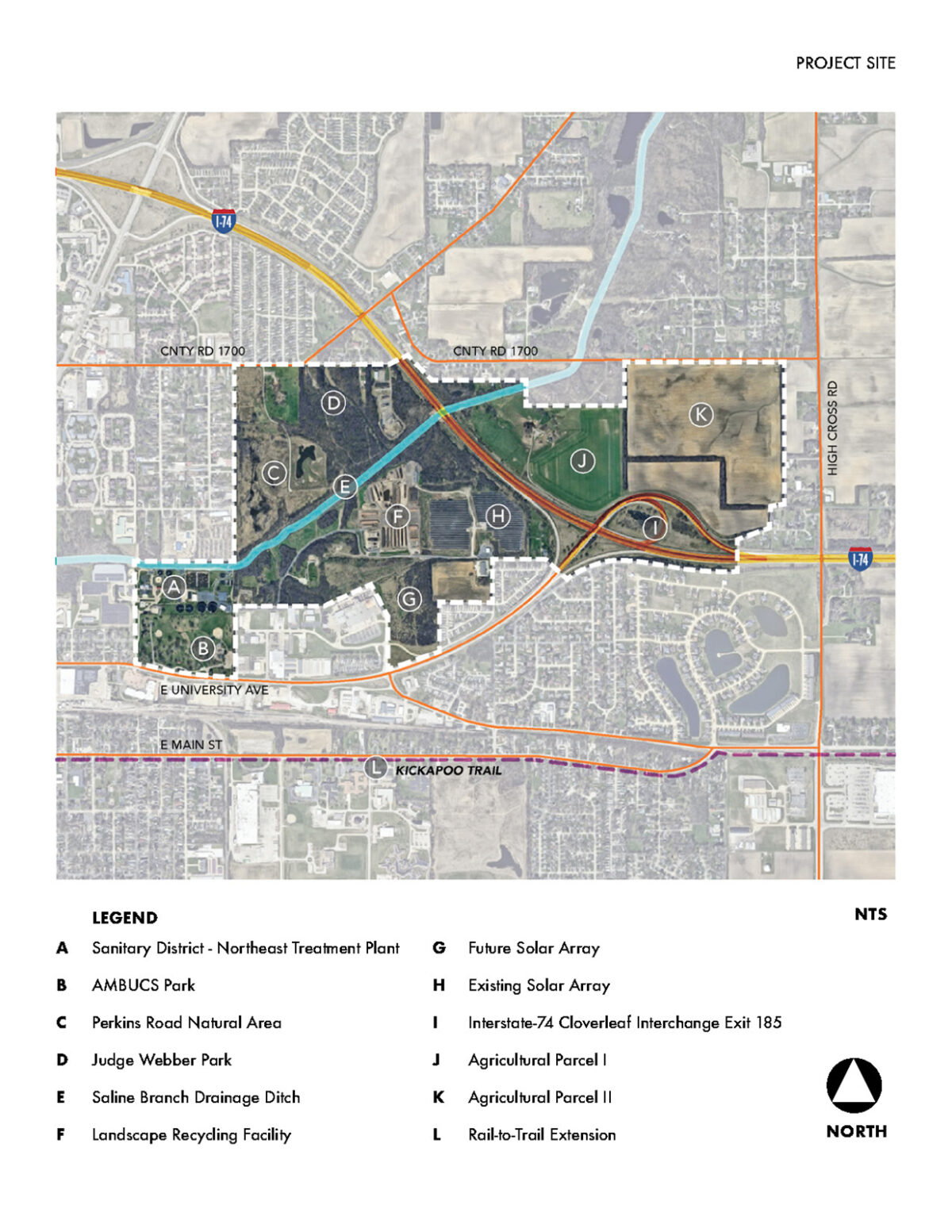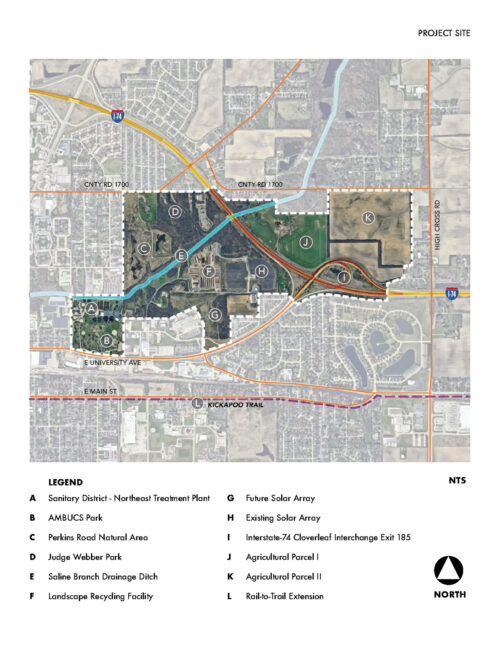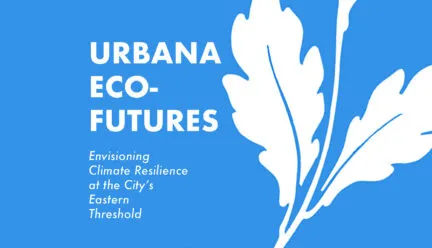
Description of Charrette, Propositions, and Related Keywords
CLIMATE RESLIENCE
The City of Urbana is confronting the challenges of climate breakdown by implementing sustainable and resilient initiatives that will have lasting benefits on its municipal infrastructure, systems, and services.
We envision a large-scale project for the city’s eastern threshold that will address the following six design propositions. Our aim is to shape the site using landscape architectural best practices and contemporary community design measures in ways that can serve as a model for Midwestern resilience.
1 ECOLOGY
biodiversity, restoration, re-wilding, community services, endangered species, beneficial habitats
We imagine a holistic community plan for improving and rehabilitating ecological systems through a process of restoration, re-wilding, and naturalizing of impacted sites, encouraging biodiversity and beneficial habitats, protecting endangered species, and defining ecosystem services policies in a way that is inclusive of all species.
2 WATER
stormwater, bioretention (recharge), water quality
We recognize that the waterways in our community are part of a tenuous riparian system negatively impacted by runoff and a range of contaminants. The system requires mitigation through redirecting, filtering, and retaining stormwater to improve environmental viability and improve water quality.
3 PUBLIC SPACE
programming, education (building constituency), safety and security, social-cultural uses, green infrastructure, community gardens, indeterminacy
We are advocates for public spaces that serve a multiplicity of community needs like education, safety and security, and social-cultural programming. We see public space as potential grounds for resilience-building measures, including green infrastructure and community food initiatives.
4 ENVIRONMENTAL JUSTICE
access, equity, identity, community-driven programming, wellbeing, health, gentrification, microclimates
We are committed to understanding ways that inequity due to income, race, identity, language, emerging microclimates, gentrification, and other factors influence the overall health and wellbeing of our community. We assert that climate change is increasing uncertainty for under-served people, that environmental justice is key to resilience placemaking, and that these issues should be addressed through the scope of landscape architecture.
5 WASTE
recycling, processing, contamination, treatment
We encourage environmentally responsible management and vertical integration of existing waste streams and contamination, reducing future waste streams by establishing policies that maximize recycling and re-use by capitalizing on possible productive cycles.
6 ENERGY
net-zero, carbon neutral, self-sufficiency, micro-grids
We commend the city for its existing and future solar field initiatives that are planned for the southern perimeter of the site. We accept the challenge of finding forward-thinking programs for these net-zero territories that will allow uses and occupancies for inhabitants that are coincidental to the solar arrays and potentially expand energy generation capacity by proposing additional green energy systems.
This event is made possible with support from the Visiting Practitioner Fund, a resource established and sustained by alumni in our department.
For more information about this event, please contact Prof Stephen Sears.

